Abstract
1. Rat liver pH5 enzymes and cell sap extracted with various organic solvents showed a variable decreased incorporation of labelled amino acids into s-RNA (`soluble' or transfer RNA) in vitro. 2. The original enzymic activity could be fully restored, though at different rates, by the addition of lipid extracts in quantities corresponding to those originally present. 3. Of the main lipid groups separated from the extract, only free cholesterol and cholesteryl esters were able to reactivate the extracted pH5 enzymes in the same way as the whole lipid extract. 4. Addition of pure cholesteryl 14-methylhexadecanoate also fully restored the enzymic activity. 5. There was no energy-dependent incorporation of labelled amino acids into ribosomal protein in the presence of extracted cell sap. Addition of cholesteryl 14-methylhexadecanoate fully restored the activity of the cell sap to incorporate labelled leucine and lysine into ribosomal protein and enhanced the incorporation of labelled protein hydrolysate and phenylalanine over the level found with the corresponding non-extracted preparations. 6. It is concluded that lipids play an important role in the synthesis of aminoacyl-s-RNA complexes and that cholesteryl 14-methylhexadecanoate may be the active lipid in this respect.
Full text
PDF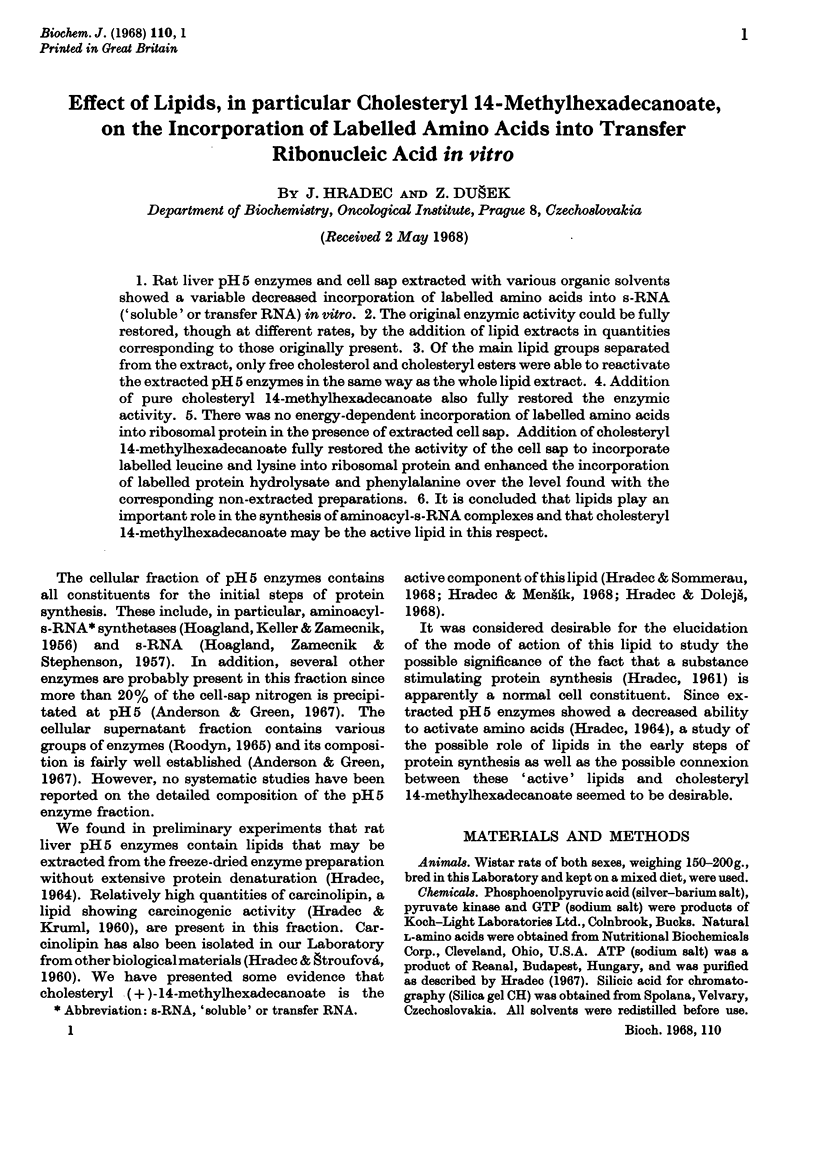
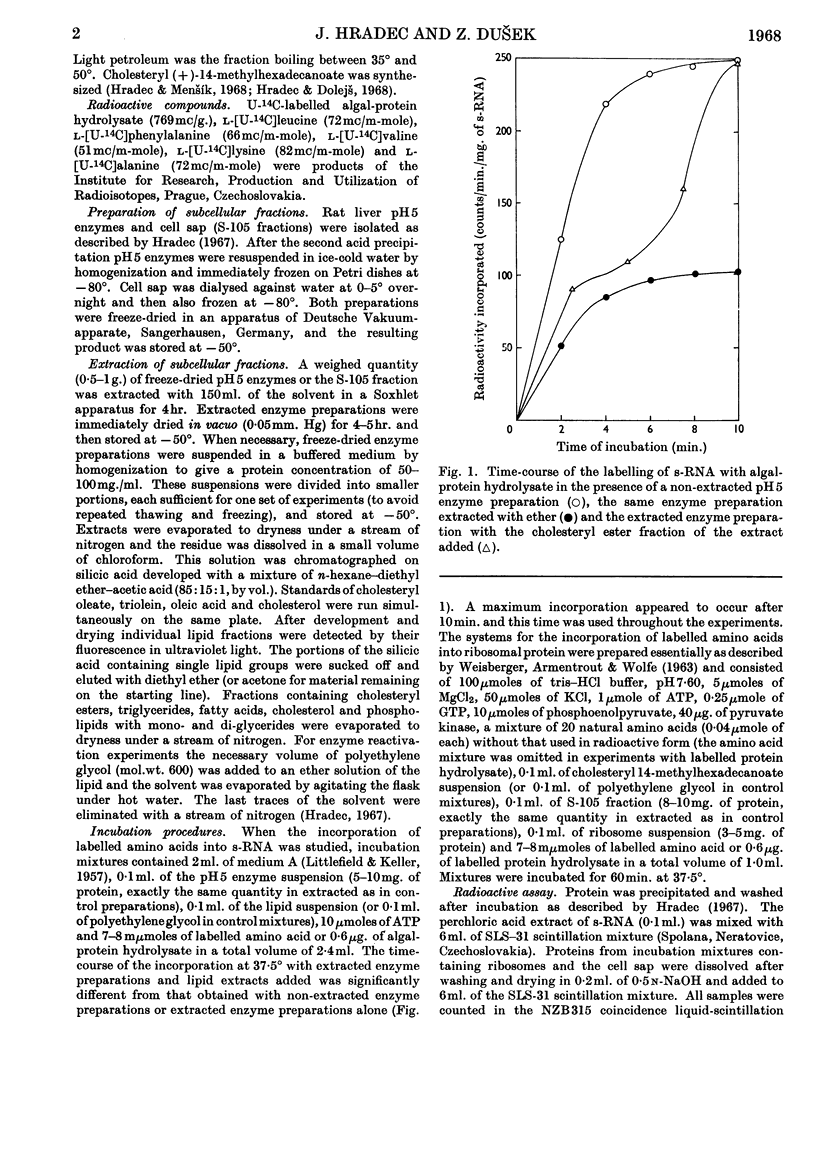
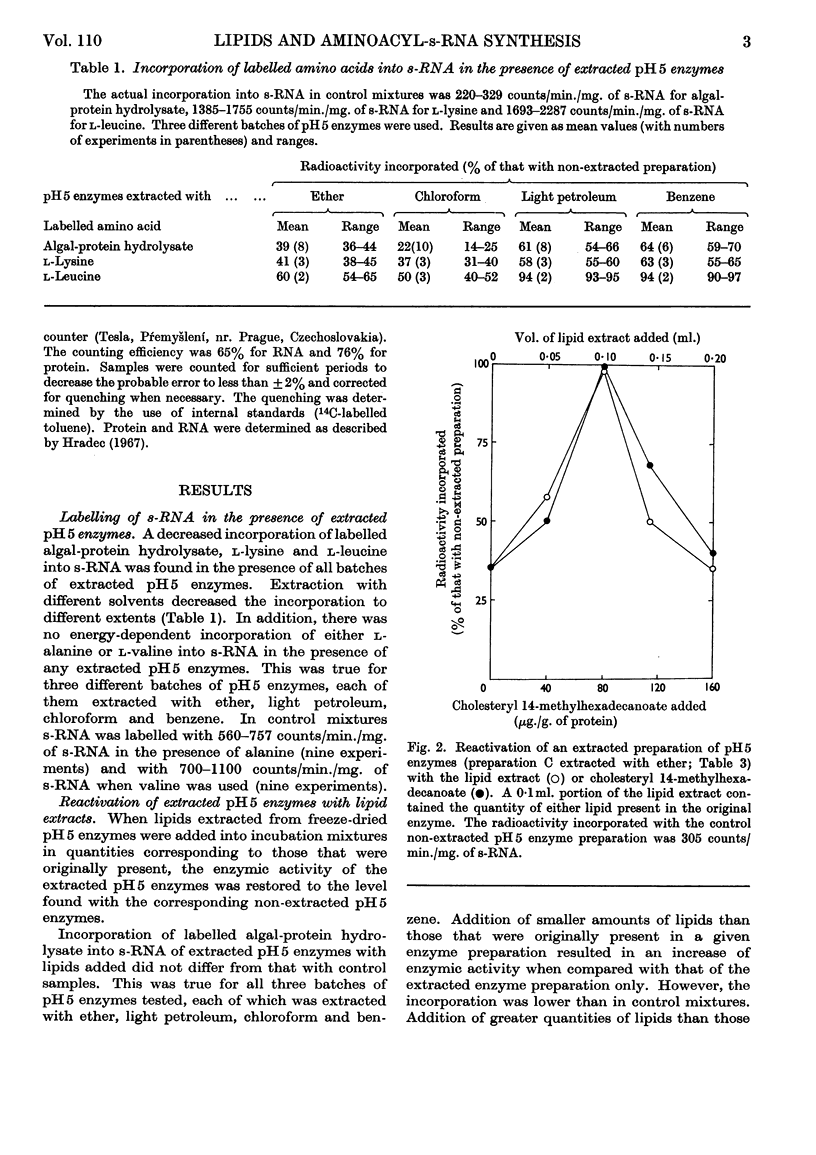
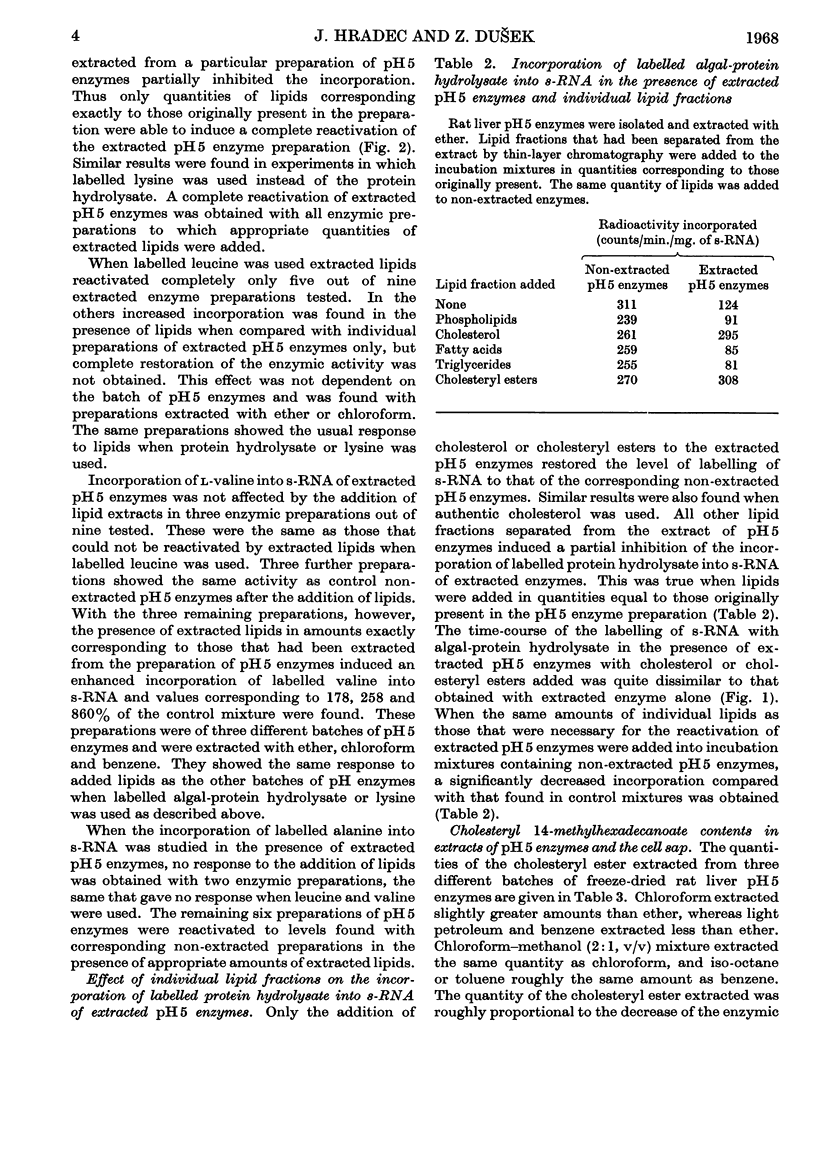
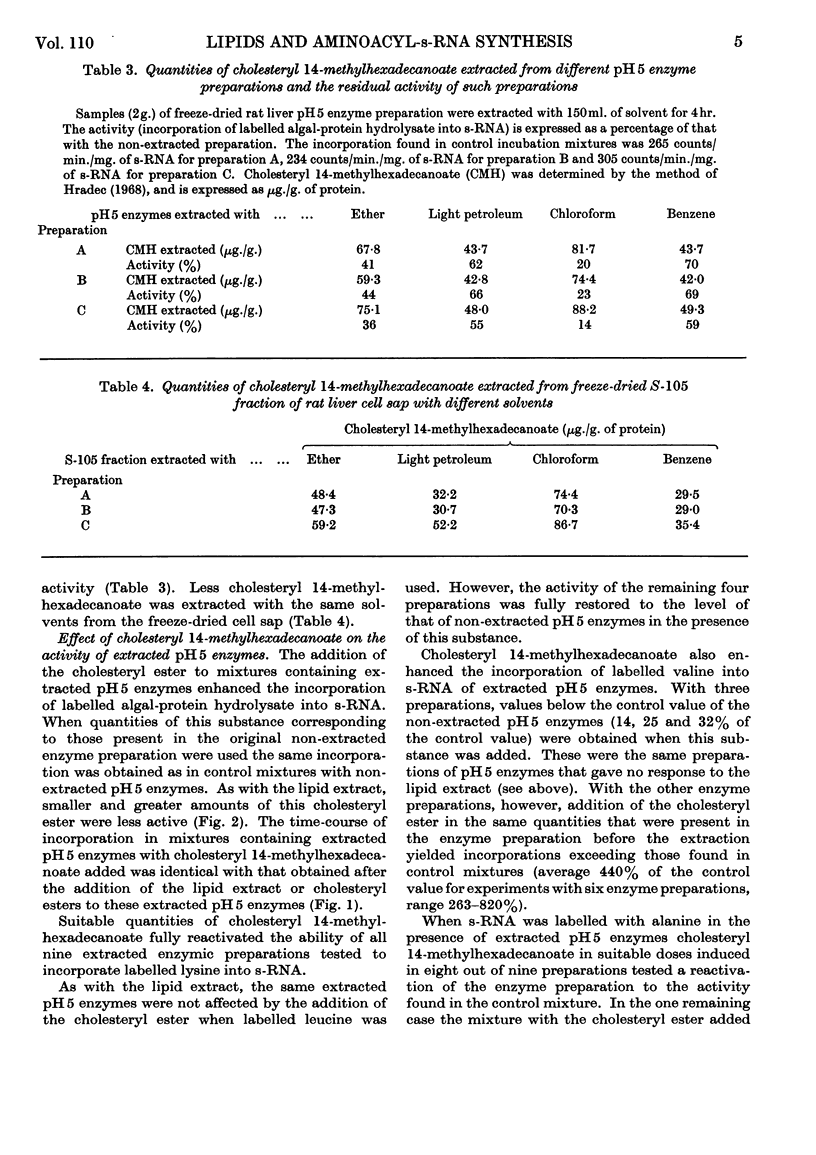
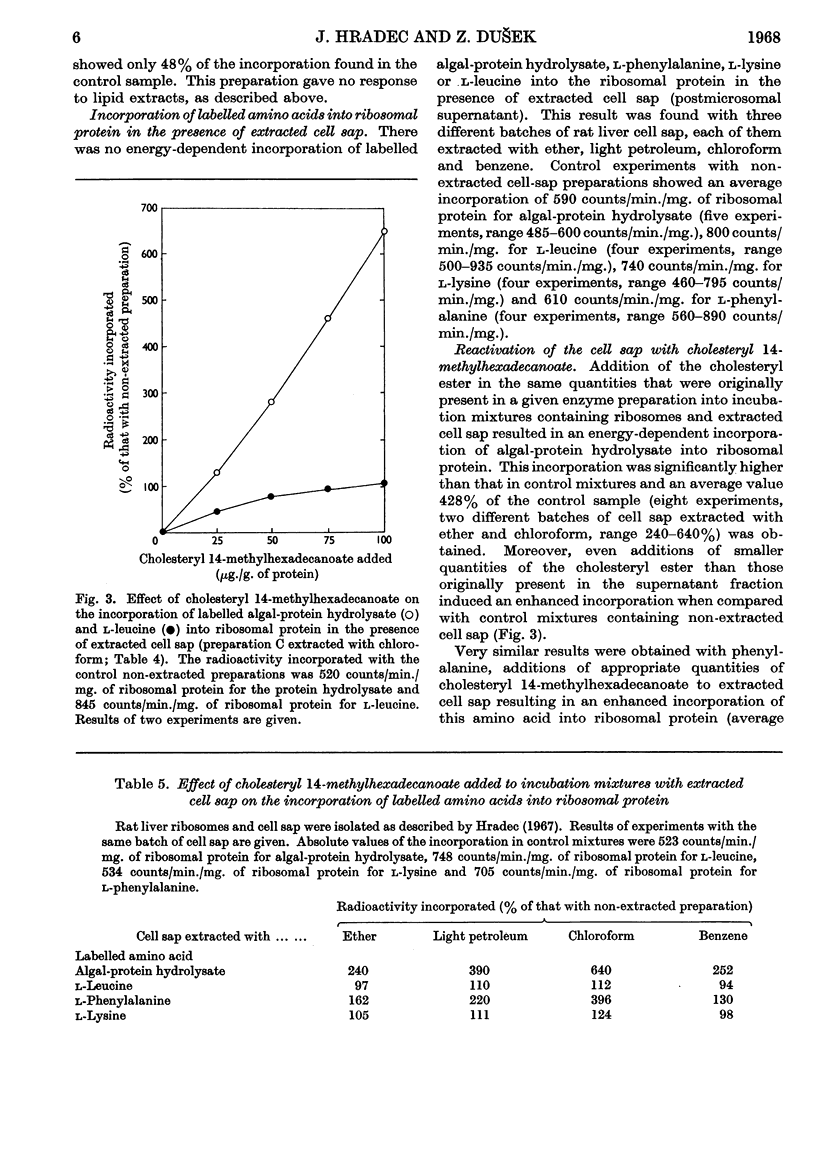
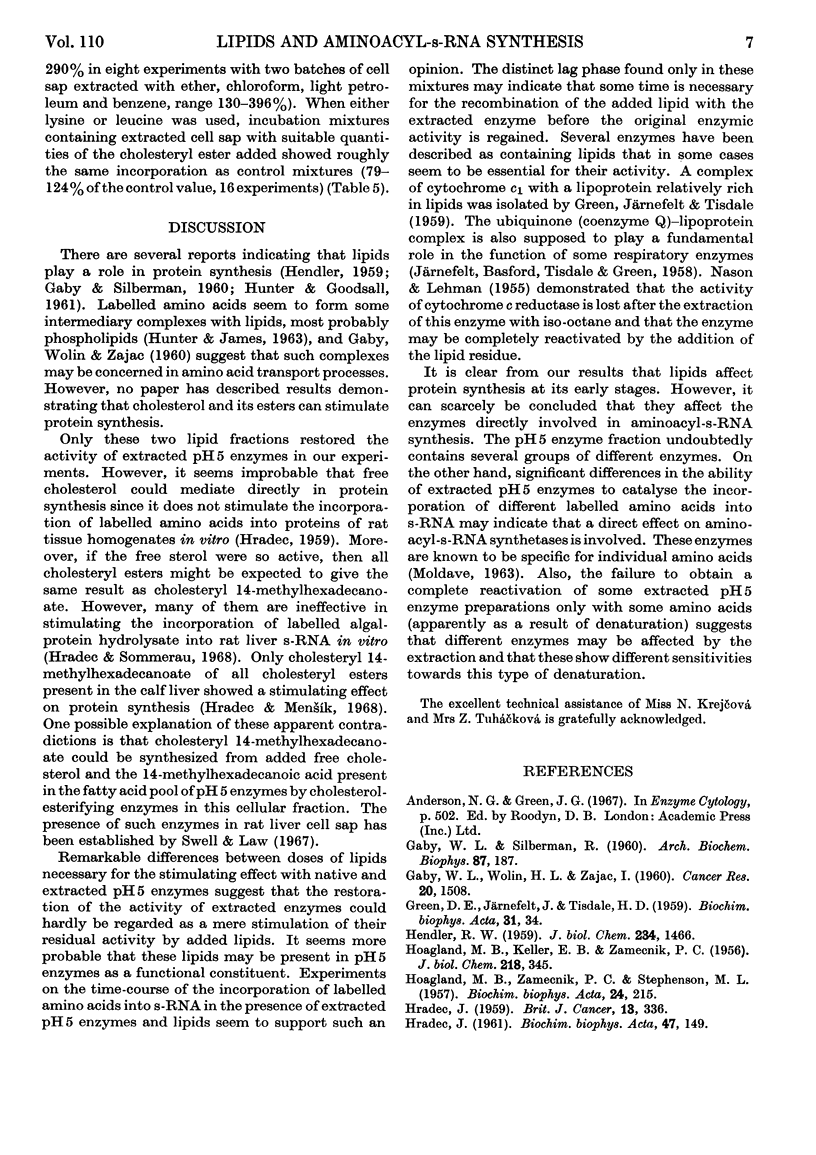
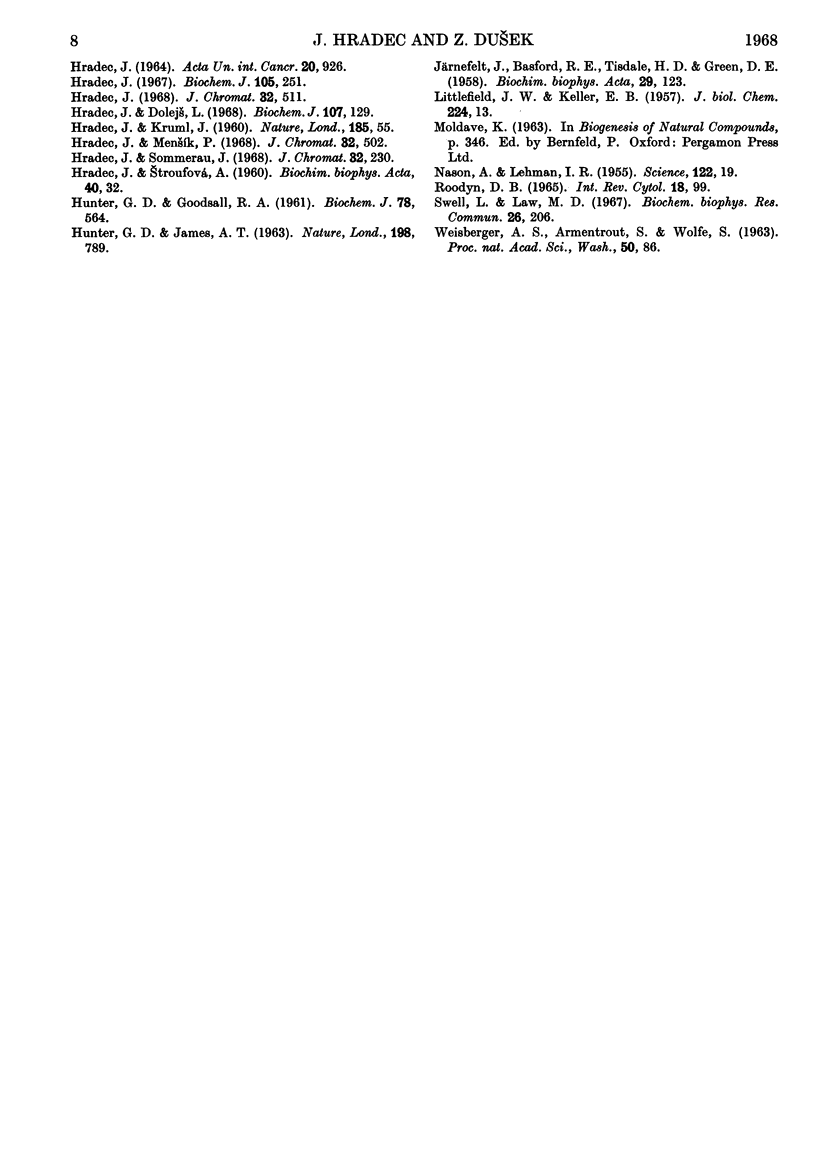
Selected References
These references are in PubMed. This may not be the complete list of references from this article.
- GABY W. L., WOLIN H. L., ZAJAC I. The role of phospholipides in the uptake of amino acids by Ehrlich ascites carcinoma cells. Cancer Res. 1960 Nov;20:1508–1513. [PubMed] [Google Scholar]
- GREEN D. E., JARNEFELT J., TISDALE H. D. Studies on the elecron transport system. XIV. The isolation and properties of soluble cytochrome c1. Biochim Biophys Acta. 1959 Jan;31(1):34–46. doi: 10.1016/0006-3002(59)90436-6. [DOI] [PubMed] [Google Scholar]
- HENDLER R. W. Passage of radioactive amino acids through nonprotein fractions of hen oviduct during incorporation into protein. J Biol Chem. 1959 Jun;234(6):1466–1473. [PubMed] [Google Scholar]
- HOAGLAND M. B., KELLER E. B., ZAMECNIK P. C. Enzymatic carboxyl activation of amino acids. J Biol Chem. 1956 Jan;218(1):345–358. [PubMed] [Google Scholar]
- HOAGLAND M. B., ZAMECNIK P. C., STEPHENSON M. L. Intermediate reactions in protein biosynthesis. Biochim Biophys Acta. 1957 Apr;24(1):215–216. doi: 10.1016/0006-3002(57)90175-0. [DOI] [PubMed] [Google Scholar]
- HRADEC J. CARCINOLIPIN--AN ESSENTIAL FACTOR IN PROTEIN SYNTHESIS. Acta Unio Int Contra Cancrum. 1964;20:926–928. [PubMed] [Google Scholar]
- HRADEC J. Effect of carcinogens and related compounds on the growth of Ehrlich ascites carcinoma and its possible mechanism. Br J Cancer. 1959 Jun;13:336–347. doi: 10.1038/bjc.1959.41. [DOI] [PMC free article] [PubMed] [Google Scholar]
- HRADEC J. Effect of carcinolipin on protein synthesis in cell-free systems. Biochim Biophys Acta. 1961 Feb 12;47:149–157. doi: 10.1016/0006-3002(61)90840-x. [DOI] [PubMed] [Google Scholar]
- HRADEC J., KRUML J. Carcinolipin: an endogenous carcinogenic substance. Nature. 1960 Jan 2;185:55–55. doi: 10.1038/185055a0. [DOI] [PubMed] [Google Scholar]
- HUNTER G. D., GOODSALL R. A. Lipo-amino acid complexes from Bacillus megaterium and their possible role in protein synthesis. Biochem J. 1961 Mar;78:564–570. doi: 10.1042/bj0780564. [DOI] [PMC free article] [PubMed] [Google Scholar]
- Hradec J., Dolejs L. The chemical constitution of carcinolipin. Biochem J. 1968 Mar;107(2):129–134. doi: 10.1042/bj1070129. [DOI] [PMC free article] [PubMed] [Google Scholar]
- Hradec J. Effect of some polycyclic aromatic hydrocarbons on protein synthesis in vitro. Biochem J. 1967 Oct;105(1):251–259. doi: 10.1042/bj1050251. [DOI] [PMC free article] [PubMed] [Google Scholar]
- Hradec J., Mensík P. Purification of the fatty acid present in carcinolipin. J Chromatogr. 1968 Feb 6;32(3):502–510. doi: 10.1016/s0021-9673(01)80522-7. [DOI] [PubMed] [Google Scholar]
- Hradec J., Sommerau J. Isolation of carcinolipin by combined liquid-solid and liquid-liquid chromatography. J Chromatogr. 1968 Jan 23;32(2):230–242. doi: 10.1016/s0021-9673(01)80489-1. [DOI] [PubMed] [Google Scholar]
- JARNEFELT J., BASFORD R. E., TISDALE H. D., GREEN D. E. Studies on the terminal electron transport system. XII. Fragmentation of the succinic dehydrogenase complex. Biochim Biophys Acta. 1958 Jul;29(1):123–132. doi: 10.1016/0006-3002(58)90152-5. [DOI] [PubMed] [Google Scholar]
- KELLER E. B., LITTLEFIELD J. W. Incorporation of C14-amino acids into ribonucleoprotein particles from the Ehrlich mouse ascites tumor. J Biol Chem. 1957 Jan;224(1):13–30. [PubMed] [Google Scholar]
- NASON A., LEHMAN I. R. Tocopherol as an activator of cytochrome C reductase. Science. 1955 Jul 1;122(3157):19–22. doi: 10.1126/science.122.3157.19. [DOI] [PubMed] [Google Scholar]
- Roodyn D. B. The classification and partial tabulation of enzyme studies on subcellular fractions isolated by differential centrifuging. Int Rev Cytol. 1965;18:99–190. doi: 10.1016/s0074-7696(08)60553-7. [DOI] [PubMed] [Google Scholar]
- Swell L., Law M. D. Heterogeneity in the composition of cholesterol esters synthesized by liver cell fractions of fasted and fed rats. Biochem Biophys Res Commun. 1967 Jan 23;26(2):206–210. doi: 10.1016/0006-291x(67)90235-5. [DOI] [PubMed] [Google Scholar]


